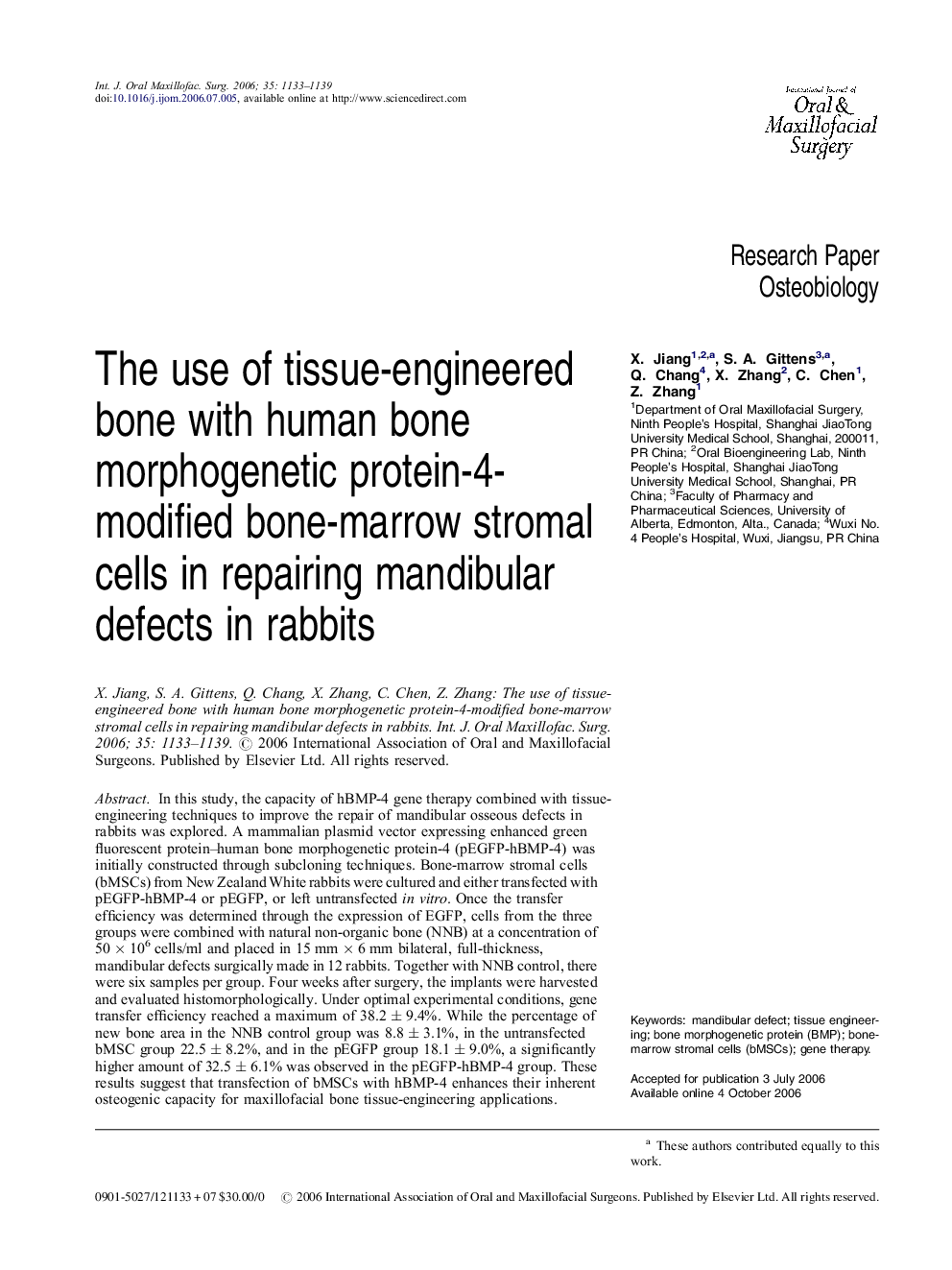| Article ID | Journal | Published Year | Pages | File Type |
|---|---|---|---|---|
| 3134938 | International Journal of Oral and Maxillofacial Surgery | 2006 | 7 Pages |
In this study, the capacity of hBMP-4 gene therapy combined with tissue-engineering techniques to improve the repair of mandibular osseous defects in rabbits was explored. A mammalian plasmid vector expressing enhanced green fluorescent protein–human bone morphogenetic protein-4 (pEGFP-hBMP-4) was initially constructed through subcloning techniques. Bone-marrow stromal cells (bMSCs) from New Zealand White rabbits were cultured and either transfected with pEGFP-hBMP-4 or pEGFP, or left untransfected in vitro. Once the transfer efficiency was determined through the expression of EGFP, cells from the three groups were combined with natural non-organic bone (NNB) at a concentration of 50 × 106 cells/ml and placed in 15 mm × 6 mm bilateral, full-thickness, mandibular defects surgically made in 12 rabbits. Together with NNB control, there were six samples per group. Four weeks after surgery, the implants were harvested and evaluated histomorphologically. Under optimal experimental conditions, gene transfer efficiency reached a maximum of 38.2 ± 9.4%. While the percentage of new bone area in the NNB control group was 8.8 ± 3.1%, in the untransfected bMSC group 22.5 ± 8.2%, and in the pEGFP group 18.1 ± 9.0%, a significantly higher amount of 32.5 ± 6.1% was observed in the pEGFP-hBMP-4 group. These results suggest that transfection of bMSCs with hBMP-4 enhances their inherent osteogenic capacity for maxillofacial bone tissue-engineering applications.
